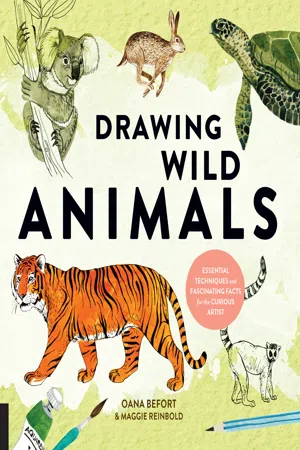
Drawing Wild Animals
Essential Techniques and Fascinating Facts for the Curious Artist
Oana Befort, Maggie Reinbold
- 144 páginas
- English
- ePUB (apto para móviles)
- Disponible en iOS y Android
Drawing Wild Animals
Essential Techniques and Fascinating Facts for the Curious Artist
Oana Befort, Maggie Reinbold
Información del libro
Featuring the delightful and informative illustrations of artist Oana Befort and the inspiring expertise of conservation educator Maggie Reinbold, Drawing Wild Animals guides artists at all skill levels as they learn to draw—and learn about—a diverse array of mammals, amphibians, and reptiles from around the world. To feed your curiosity, you'll learn the characteristics, behaviors, andhabitats of animals from categories likepredators, burrowers, grazers, marsupials, frogs and toads, and lizards and snakes. To nurture the artist, you'llget more than 25 step-by-step instructions that show how to develop each animal from simple shapes into richly detailed drawings. Armed with a deeper understanding of animals, you'll be better able to capture their stunning beauty and enchanting attributes in your artwork. Some of the intriguing animals you'll encounter:
- Bengal tiger
- Yellow mongoose
- African bush elephant
- European hedgehog
- Black flying fox
- Ring-tailed lemur
- Blue poison frog
- Gold dust day gecko
- Russian tortoise
With Drawing Wild Animals, you'll learn to see—and draw—animals in a whole new light!
Preguntas frecuentes
Información
MAMMALS
